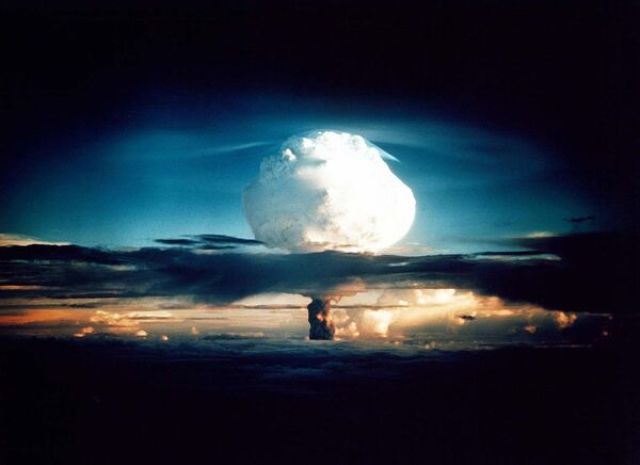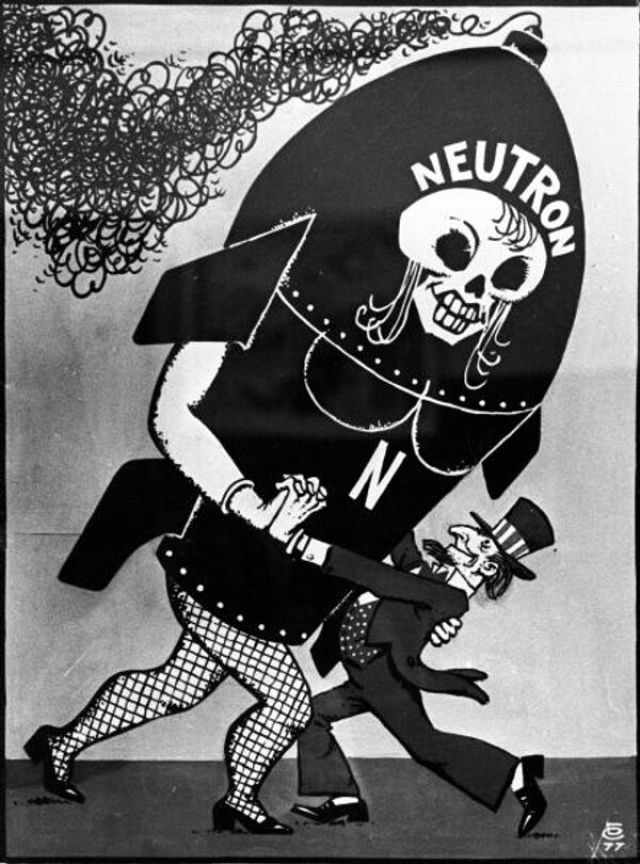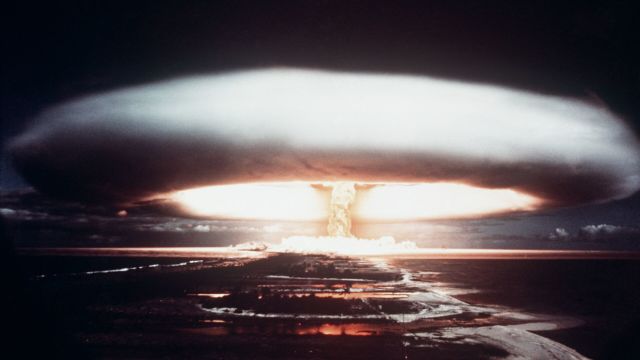Forty-five years ago, the USSR tested a neutron bomb
MOSCOW, Nov 17 — RIA Novosti, Andrey Kotz. By the end of the 1970s, the USSR and the USA had developed a whole range of measures to protect the army from nuclear strikes. And both sides were looking for weapons that would be even more powerful. Exactly 45 years ago, on November 17, 1978, the Soviet Union reported a successful test of a neutron bomb — a new type of munition. About its features — in the material of RIA Novosti.
Save infrastructure
Atomic scientists of the All-Union Institute of Experimental Physics in Arzamas-16 were engaged in this project on the instructions of the Ministry of Defense. It took less than a year to create an experimental sample. Structurally, it was a conventional low—power nuclear charge, to which a block with a beryllium isotope was added - a source of fast neutrons.

Testing of a thermonuclear explosive device in the USA
Image Source: © Public domain/National Nuclear Security Administration / Nevada Site Office
When such a device is detonated, a thermonuclear reaction is triggered. Moreover, up to 80 percent of the energy is accounted for by the fast neutron flux and only 20 — by the remaining damaging factors.
It was assumed that this would turn the bomb into an effective weapon for destroying infantry in armored vehicles and shelters. Fast neutrons penetrate through all obstacles, unlike X-ray or gamma radiation.
In addition, the infrastructure of large cities would be preserved, inevitably destroyed by conventional nuclear weapons. It was believed that the enemy's weapons would also survive, which means they could be studied or used.

Reproduction of the drawing "Deadly Tango". The work of the artist Boris Starchikov. Exhibition of satirical drawing and poster "No neutron bomb! No arms race!" in the Central House of Journalists
Image source: © O. Buldakov
But people would have died. Neutrons ionize tissues, causing radiation sickness. According to calculations, an explosion with a capacity of one kiloton in a radius of 500 meters immediately kills all living things. Two kilometers away — within a few days.
However, tests have shown that the neutron munition is not as effective as expected. A kiloton bomb completely destroyed buildings at a distance of up to a kilometer from the explosion site, and metal structures of buildings and armor of military equipment turned into sources of induced radioactivity, and quite long-term.
This put an end to plans to use the enemy's property. In addition, due to the strong scattering of neutrons in the atmosphere, the range of radiation damage was small in comparison with a conventional nuclear charge of the same power.
Space interception
The second main goal of the development of neutron weapons is to be used as one of the elements of missile defense. At high altitudes, the shock wave of conventional nuclear weapons is weak due to the rarefaction of the air, it simply does not exist in outer space, and the radiation is quickly absorbed by the rocket body.
The only thing that can hit an ICBM is an electromagnetic pulse. Where there is no atmosphere, nothing will stop the flow of neutrons.
The most powerful neutron charge ever tested is the five—megaton W-71 warhead of the American LIM-49A Spartan interceptor missile. During the tests, another advantage of the new type of ammunition was revealed: a powerful flash of soft X-ray radiation hit the enemy's nuclear weapons.
X-rays instantly warmed up the hull material to evaporation, which led to an explosion. To enhance this radiation, the inner shell of the warhead was made of gold.
In the USSR and the USA, it was believed that neutron weapons could be used for other tasks. For example, both sides developed specific weapons to destroy bunkers where the highest military and political leadership is hiding. However, nothing is known about the results of these studies.
Limited edition
The neutron bomb never became a miracle weapon. Both Moscow and Washington quickly came up with protection: sheets with a high content of boron, which absorbs neutrons well, were added to the armor. Later, multilayer samples with depleted uranium elements were produced.
Since that time, they have been making sure that there are no chemical elements in the armor that give strong induced radioactivity under the influence of neutron irradiation.
As a result, relatively few neutron munitions were manufactured. Production was curtailed in the mid-1980s. It is known that the United States has a small arsenal of these weapons today. Technologies are also owned by Russia, France and, possibly, China. However, there is no information about ready-made warheads in the armies of these countries in open sources.

